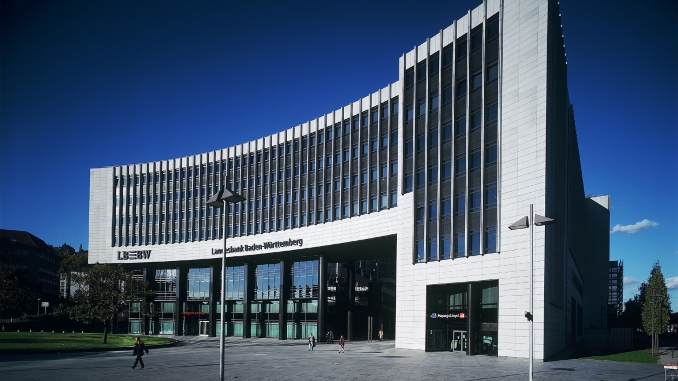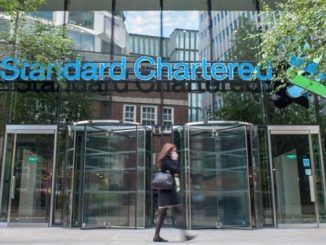
Landesbank Baden-Württemberg reached an unusually broad, international investor base with its inaugural green Pfandbrief on Monday, a EUR500m five year benchmark that received an “overwhelming” response, generating pricing power, according to the German issuer, which is also working on a social programme.
The deal is LBBW’s second green bond, following a EUR750m four year senior unsecured issue in December. LBBW becomes the third green covered bond issuer from Germany, following Berlin Hyp and Deutsche Hypothekenbank.
Following a mandate announcement on Friday (15 June), leads ABN Amro, DZ Bank, LBBW, Swedbank and UBS launched the EUR500m no-grow issue with guidance of the mid-swaps minus 9bp area on Monday morning.
After around one hour and 15 minutes, the leads announced that books had surpassed EUR1bn, including EUR80m joint lead manager interest. The spread was subsequently set at minus 12bp, with books approaching EUR1.5bn, including EUR80m JLM interest.
“There were at least 25% more lines than you’d get for a normal German Pfandbrief,” said a syndicate banker at one of the leads. “They could probably have gone tighter, but with this being an inaugural deal they wanted to leave a positive tone.”
Patrick Steeg, head of asset and liability management at LBBW (pictured), told Sustainabonds that minus 12bp with a book of over EUR1.6bn could be considered “a tremendous success”.
 “We are completely overwhelmed by this result,” he said. “There are clearly major differences compared with a traditional Pfandbriefe. The order book development was extremely rapid, despite competing supply in the market and we are convinced that the green element was an important driver of that.”
“We are completely overwhelmed by this result,” he said. “There are clearly major differences compared with a traditional Pfandbriefe. The order book development was extremely rapid, despite competing supply in the market and we are convinced that the green element was an important driver of that.”
The final book stood at over EUR1.6bn, including over 75 accounts. Green investors were allocated 46% of the deal. Banks took 42.1%, fund managers 24.2%, central banks and official institutions 22.7%, and insurance companies and pension funds 11%.
Accounts in Germany were allocated 50%, the Nordics 13.7%, the UK 11.1%, the Benelux 7.4%, Eastern Europe 7%, Asia and the Middle East 5.9%, Southern Europe 2.5%, Austria and Switzerland 1.9%, and others 0.5%.
“There is clear proof that with the green element you attract investors that have not been playing in the traditional covered bond world so far,” said Steeg. “This gives you additional momentum and additional pricing power.
“Diversification with this pricing power could lead to a better price.
“It is an idea that has often been denied by the market, but I am convinced that with this diversification and with this pricing power, you can achieve a ‘greenium’.”
Steeg said it is hard to put a number on how much wider a conventional Pfandbrief may have been priced as, he said, secondary market levels are currently of limited use when calculating fair value as they do not reflect realistic clearing levels. He added that LBBW could have priced the deal much tighter, based on the substantial oversubscription, but said LBBW wanted to be fair to investors and leave room for secondary market performance.
Syndicate bankers said LBBW’s deal offered a new issue premium of around 6bp versus the issuer’s curve, with LBBW’s February 2022s seen at 18.5bp, mid, August 2022s at minus 18bp, January 2024s at 20bp and January 2025s at minus 15bp. They also cited as comparables the green Pfandbriefe of Berlin Hyp and Deutsche Hypothekenbank, seeing Berlin Hyp May 2022s at minus 16.5bp and October 2023s at minus 15bp, and Deutsche Hyp November 2023s at minus 14bp.
Peter Kammerer, head of investor relations at LBBW, said the unusually high distribution to non-German accounts showed that investors that had not invested in LBBW before or would not typically invest in Pfandbriefe had participated in the deal. Euro-denominated German Pfandbriefe are historically mostly distributed to domestic accounts.
“We saw accounts that invested in our senior debut last year returning for this deal, who probably would not normally invest in German Pfandbriefe,” he added.
Kammerer said investors showed a good understanding of LBBW’s green bond framework, as the issuer received few questions compared to when it was marketing its senior debut last year, and suggested this is a sign that the green investor base is becoming more advanced.
The proceeds of the new issue will finance or refinance loans relating to energy efficient commercial real estate in Germany and the US.
LBBW’s green bond framework is focussed on the categories of energy efficiency, specifically relating to commercial real estate, and on renewable energy. LBBW’s green portfolio currently comprises only German and US energy efficient commercial real estate loans. The bank is working on adding renewable energy assets and UK commercial real estate loans to the portfolio.
“The portfolio should grow enormously by size,” said Steeg.
LBBW is also currently structuring a social bond programme, from which it intends to issue social covered bonds and senior unsecured bonds. It hopes to establish the programme by the end of this year.
“For LBBW sustainability is a clear strategic goal, throughout the value chain of the whole group,” added Steeg.



